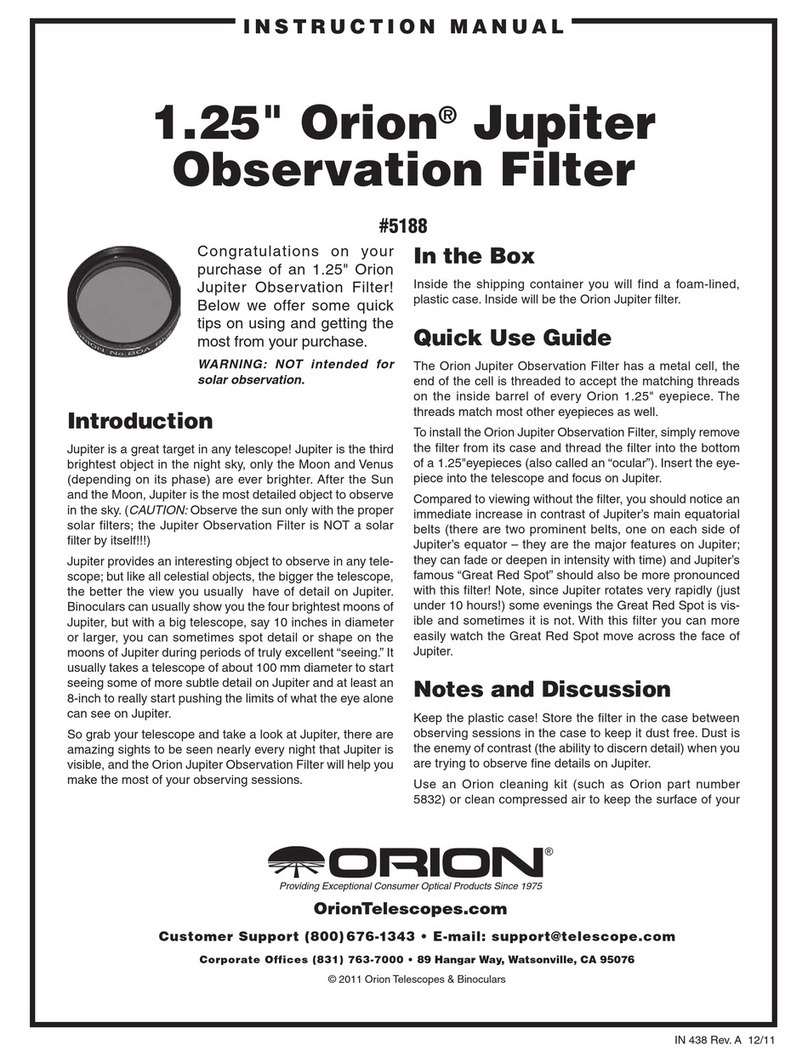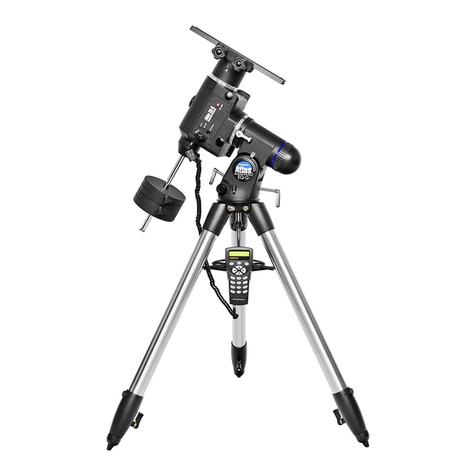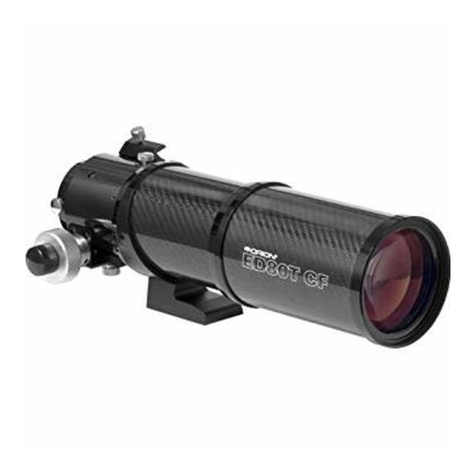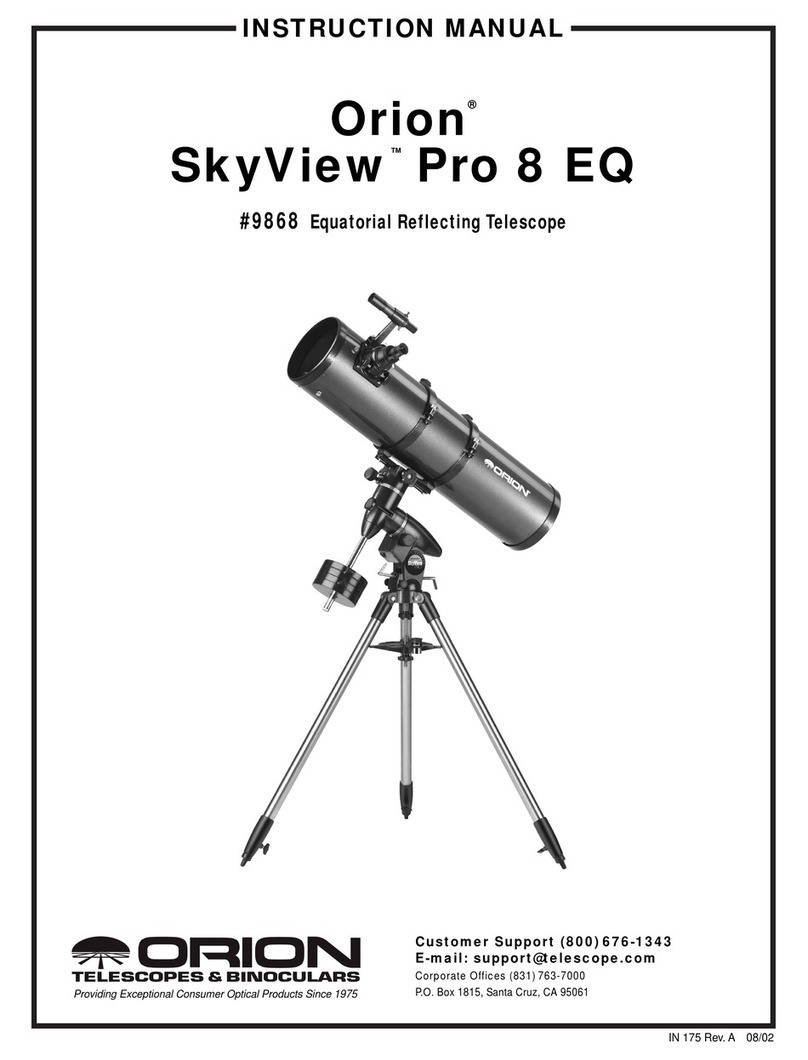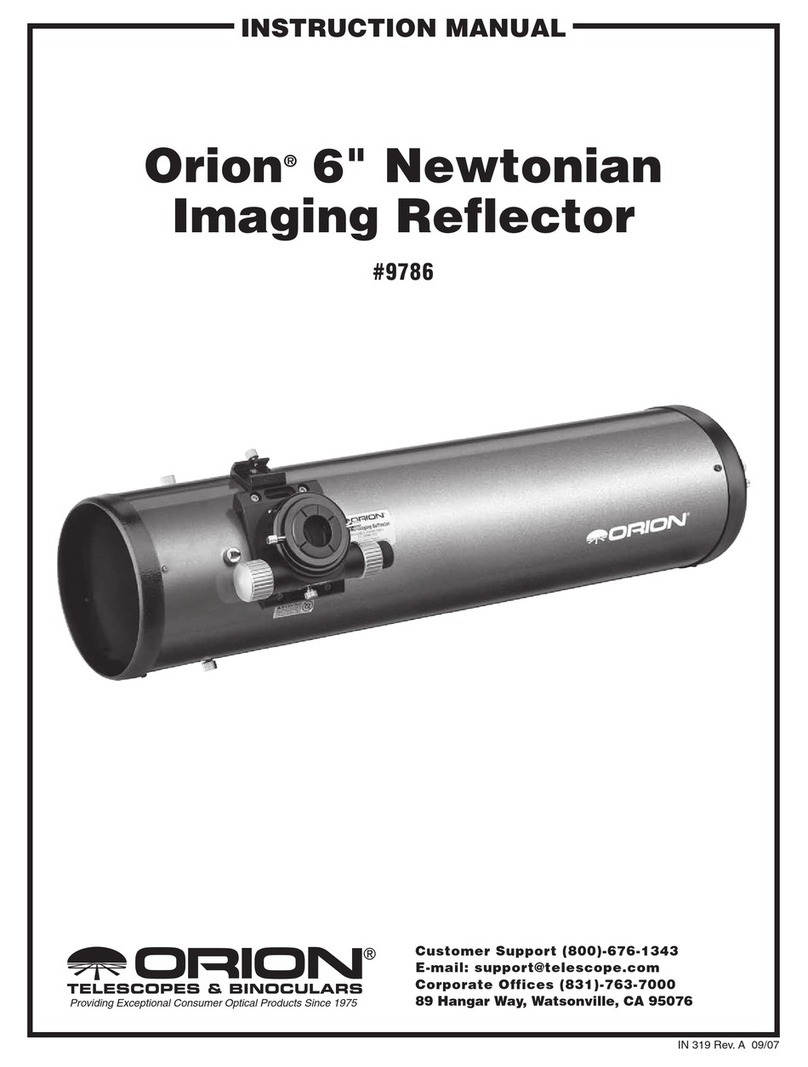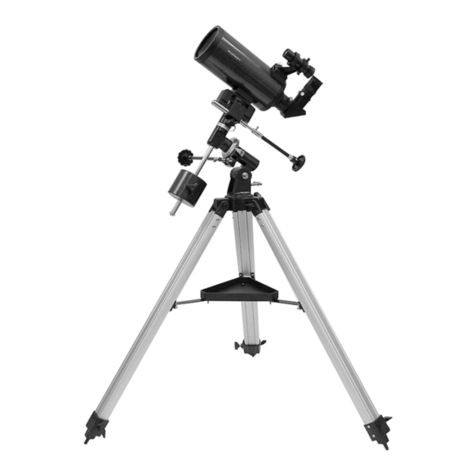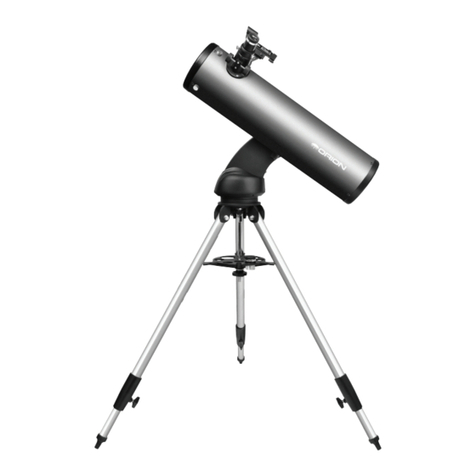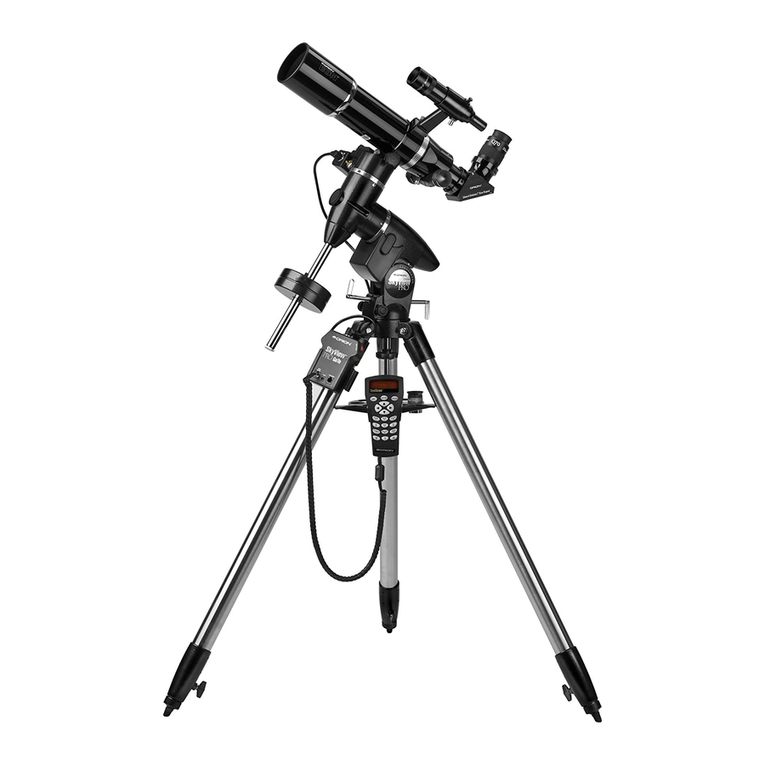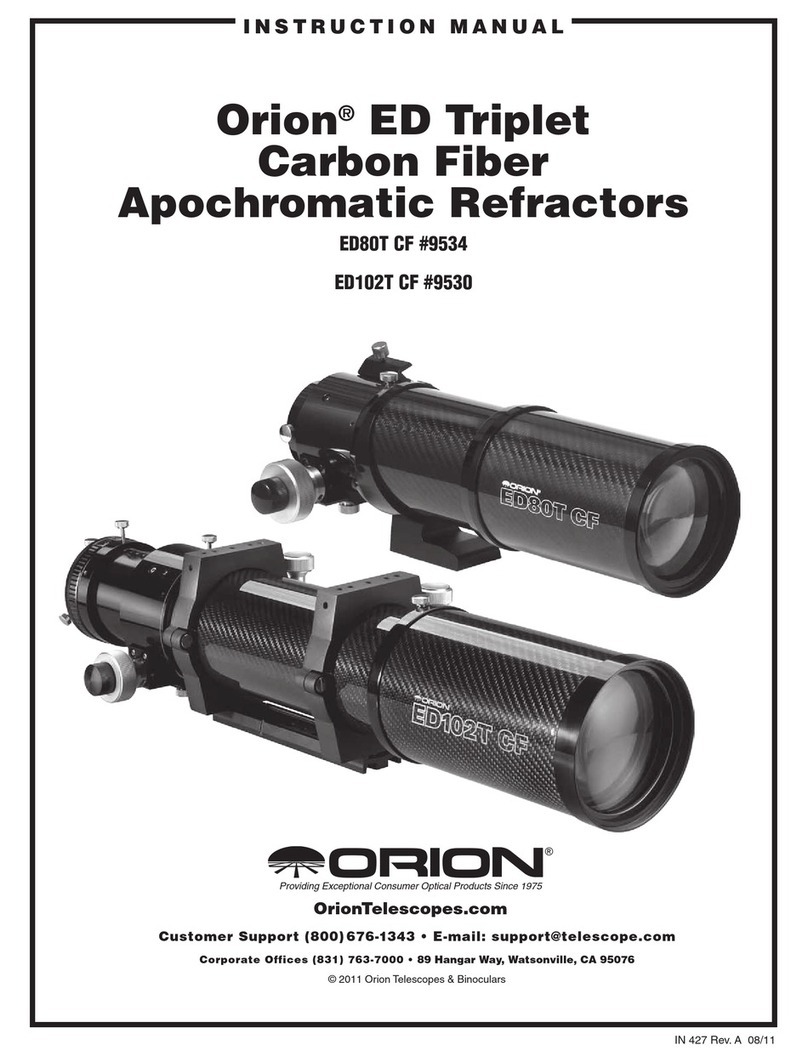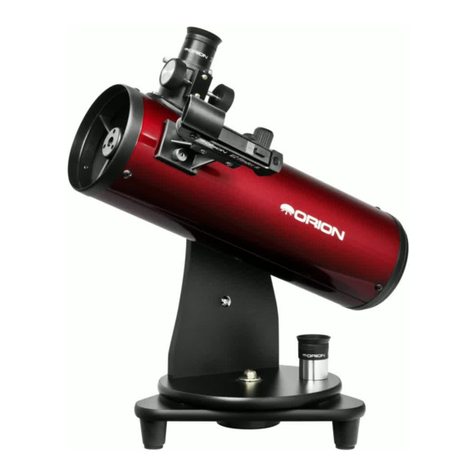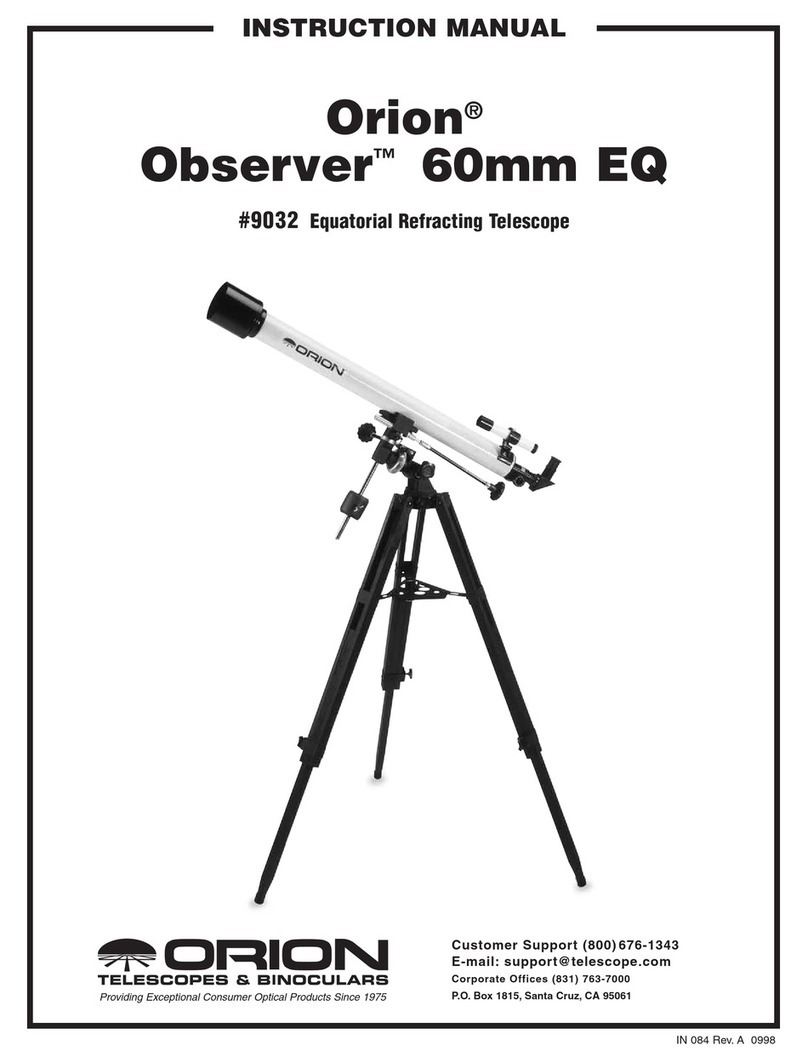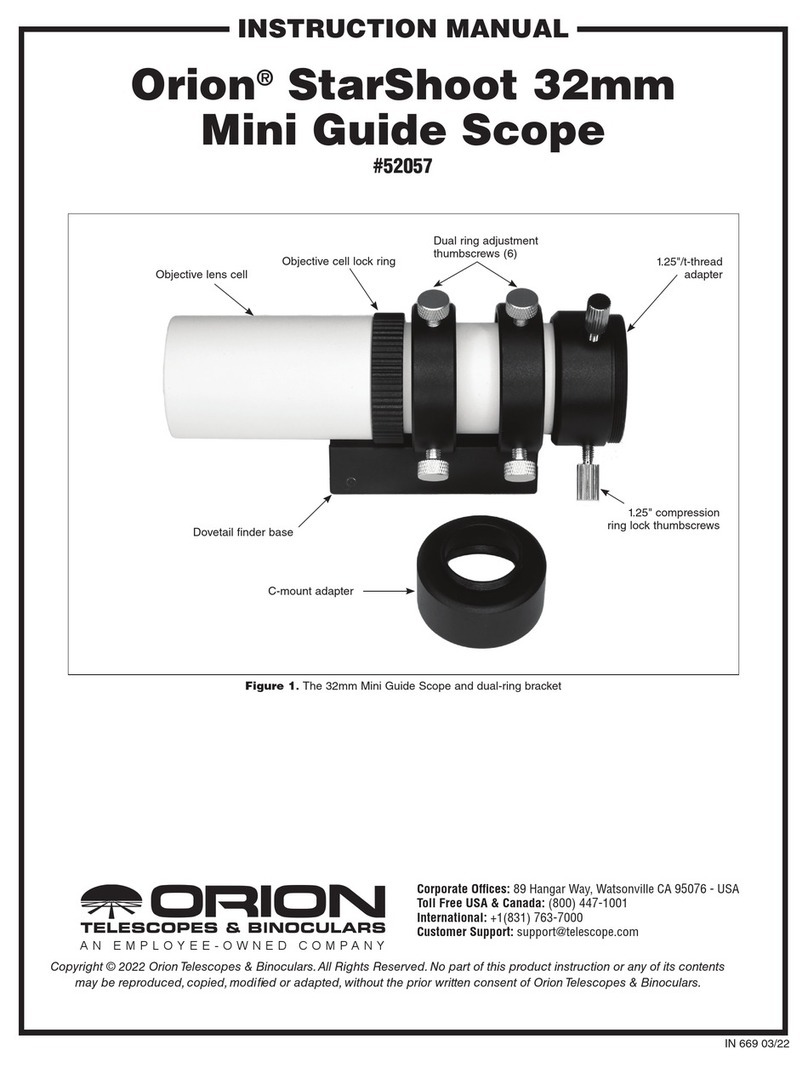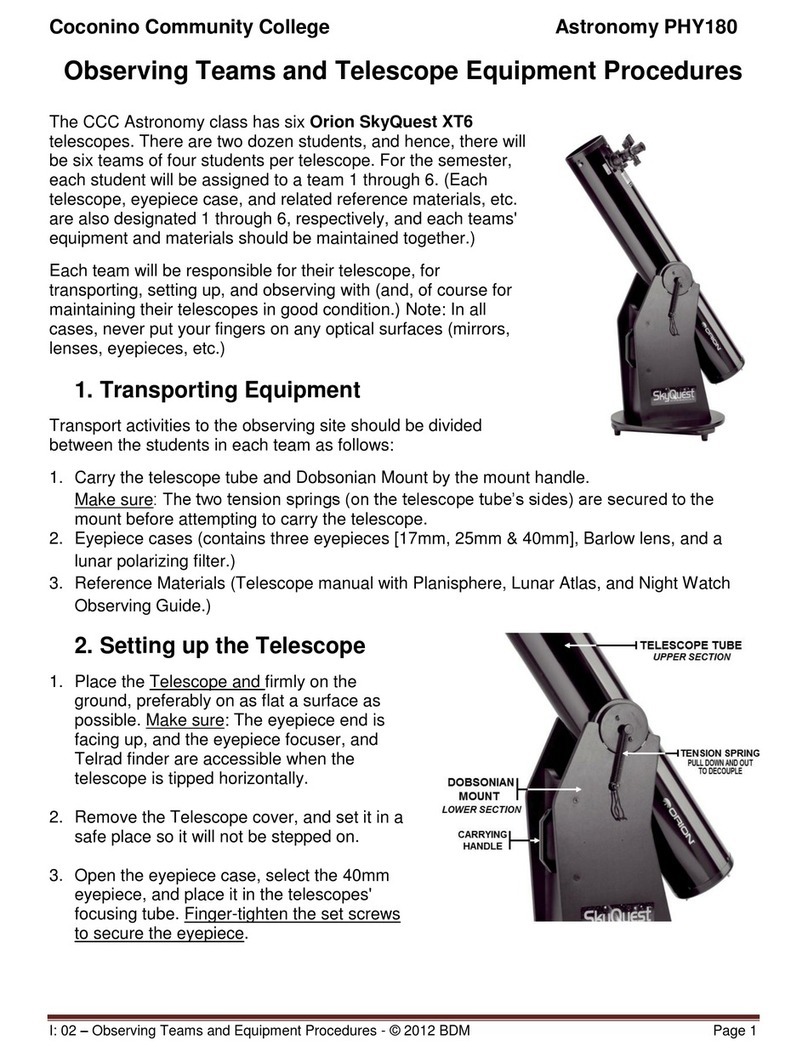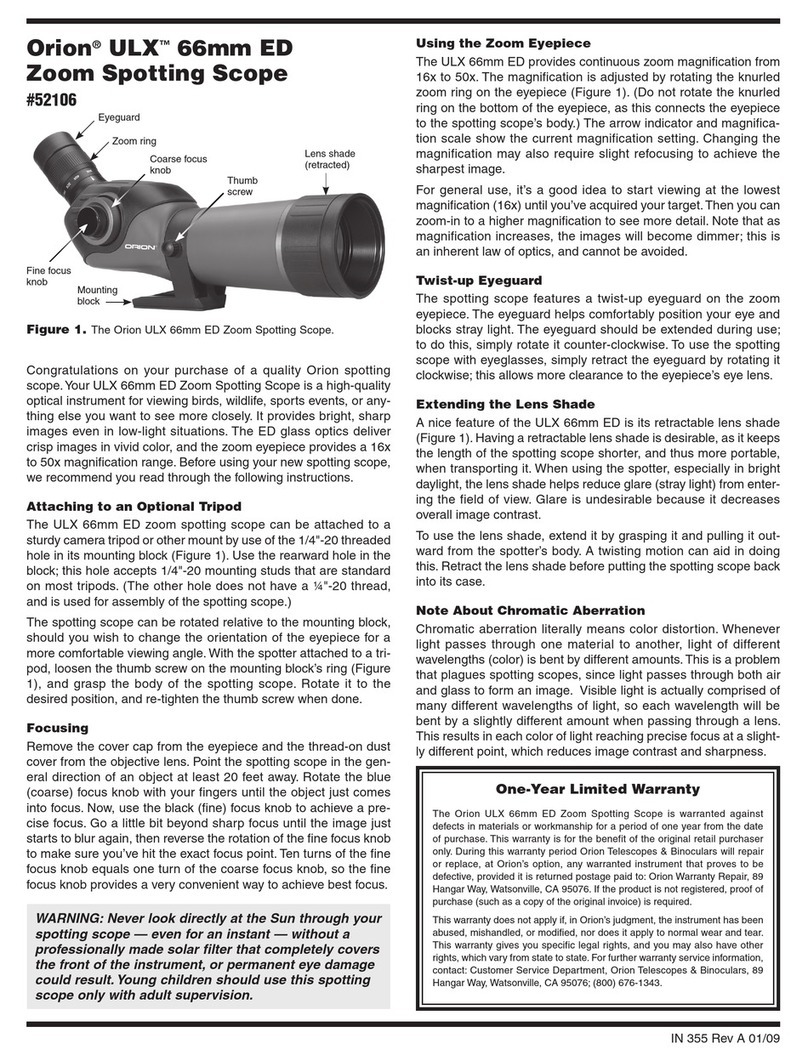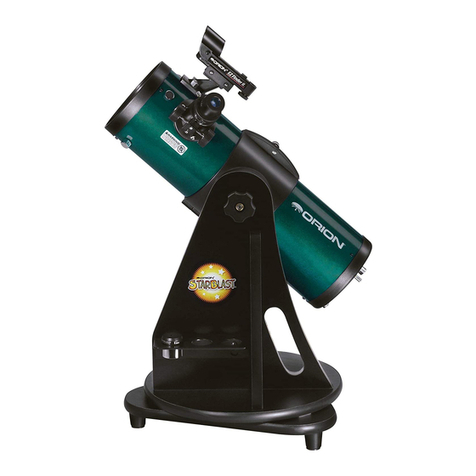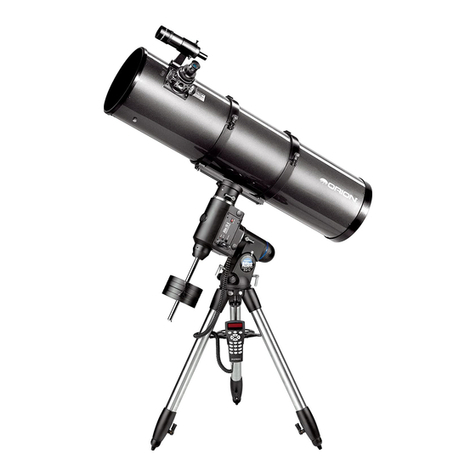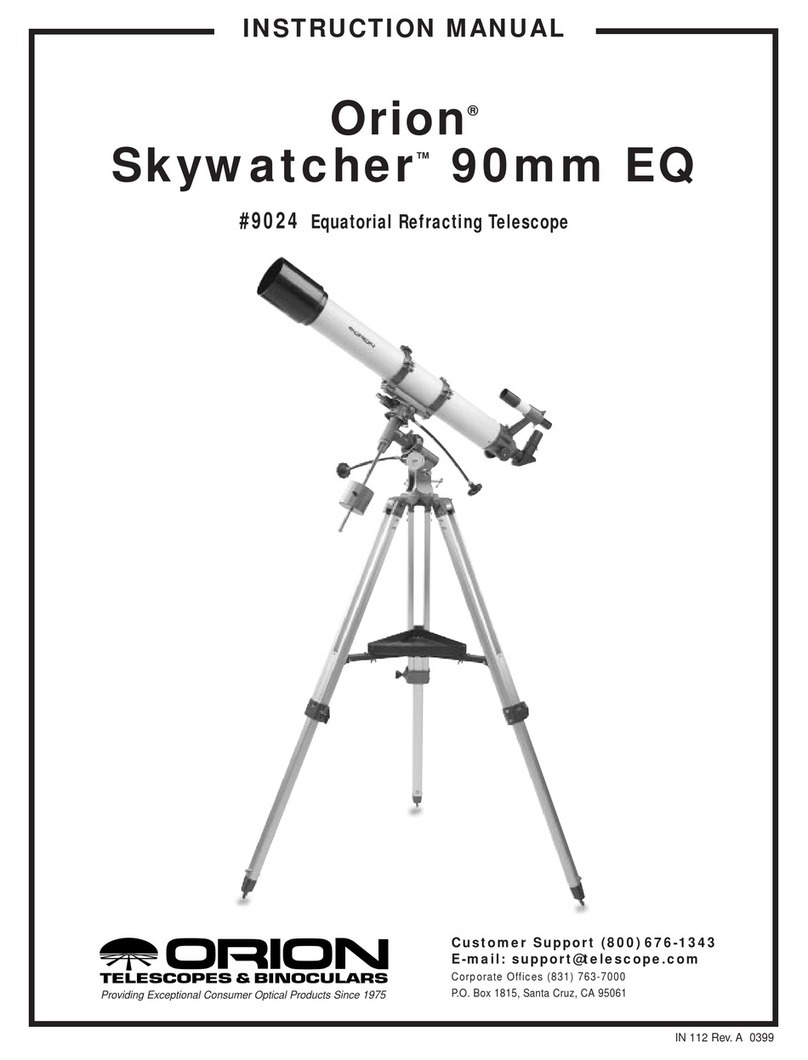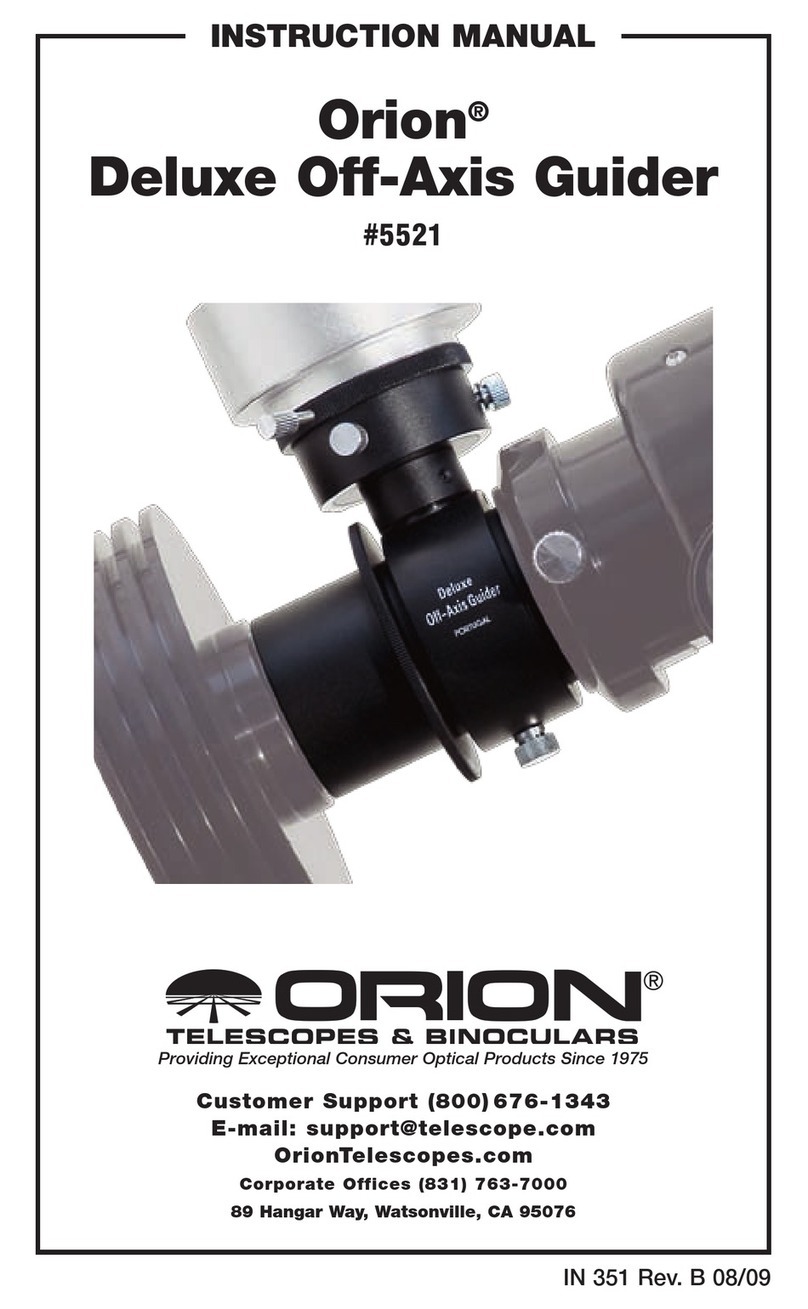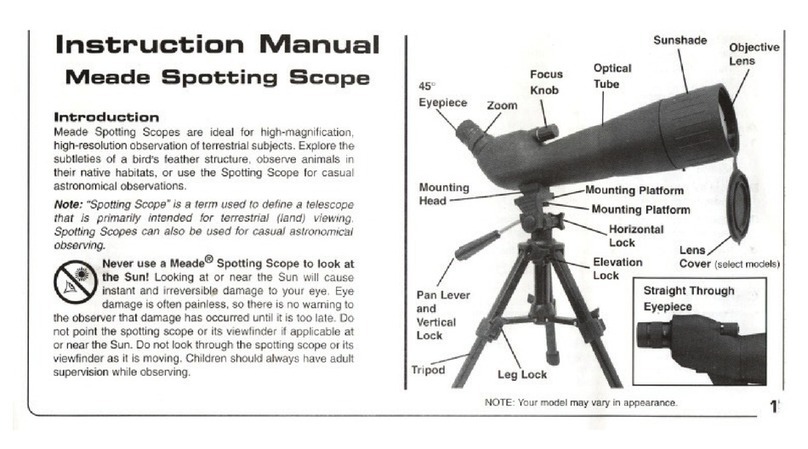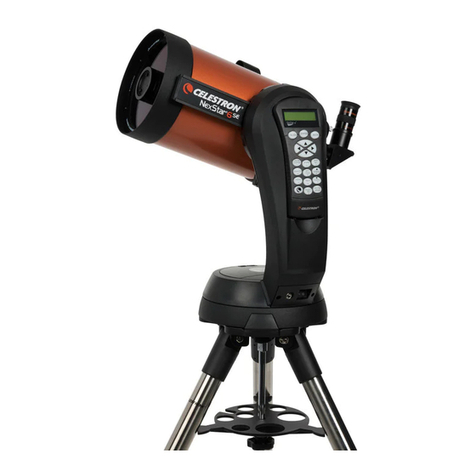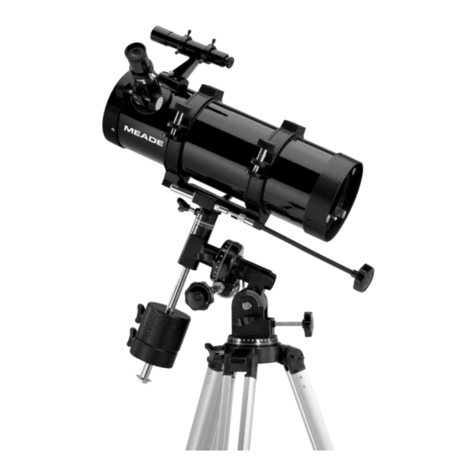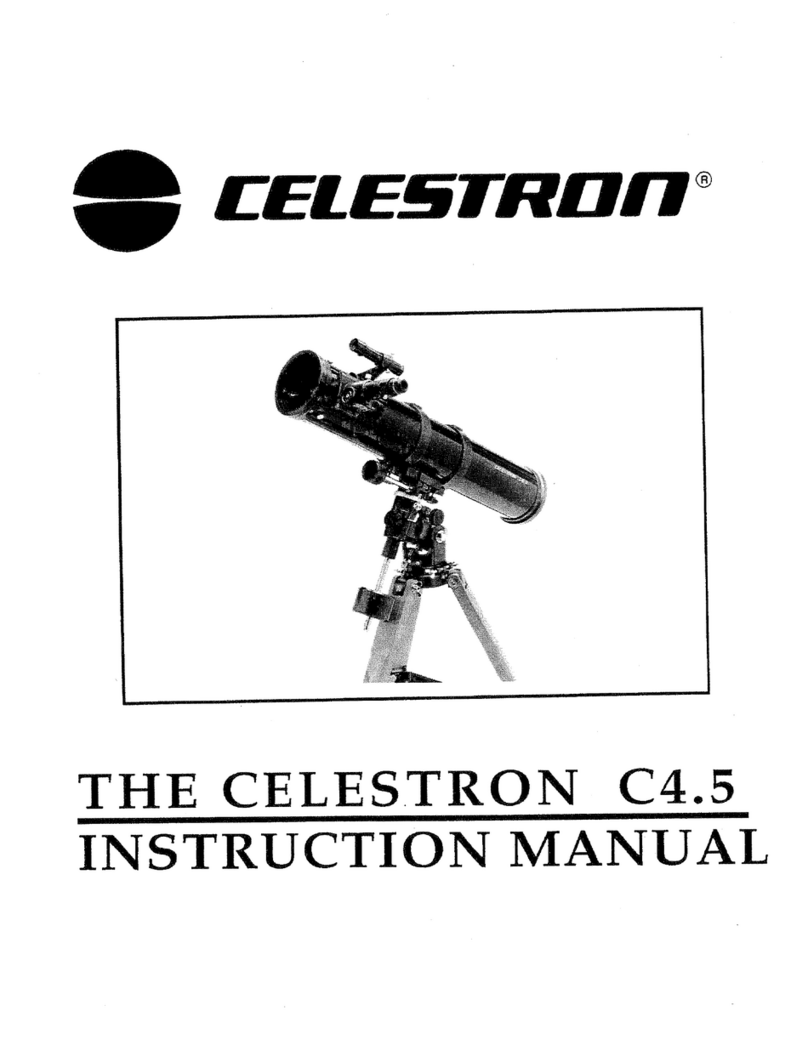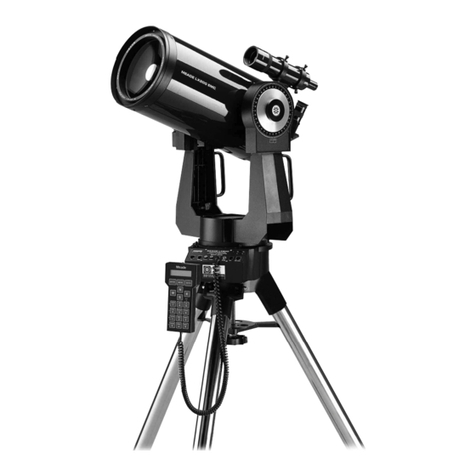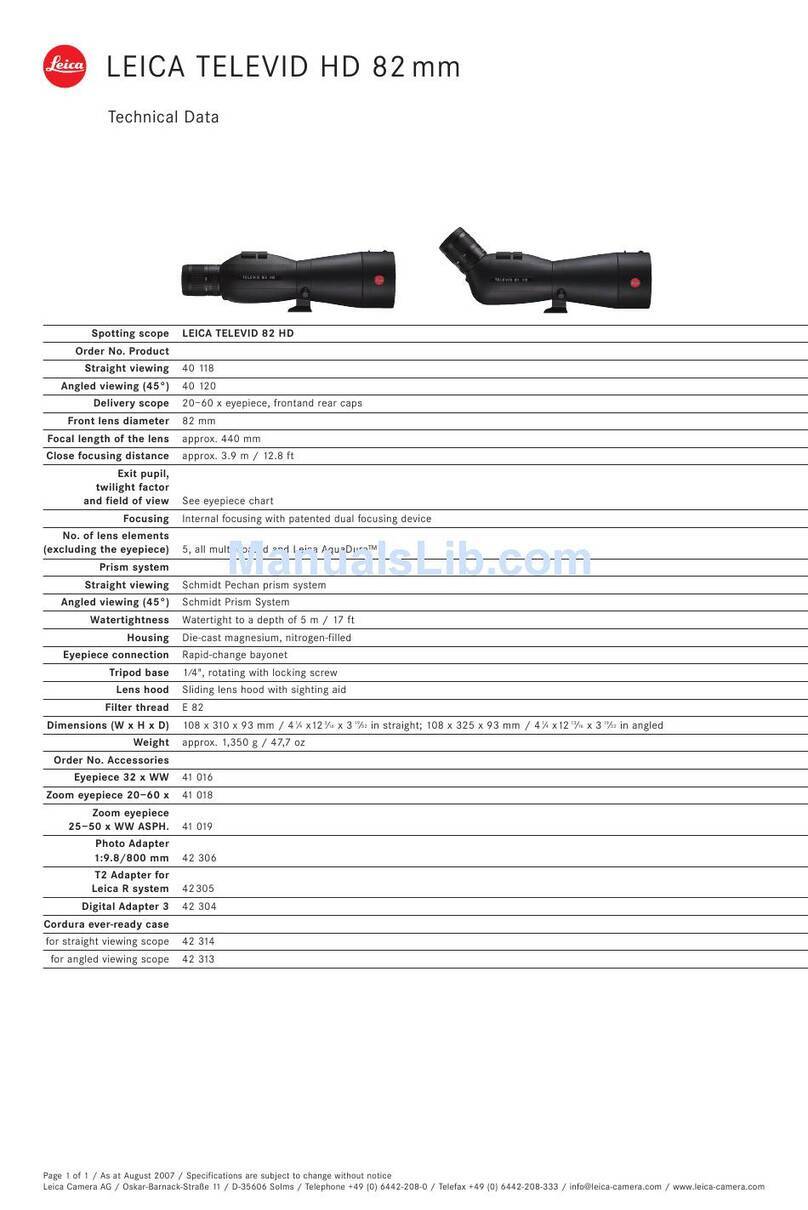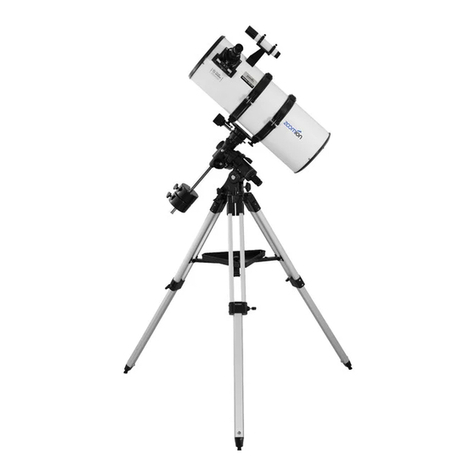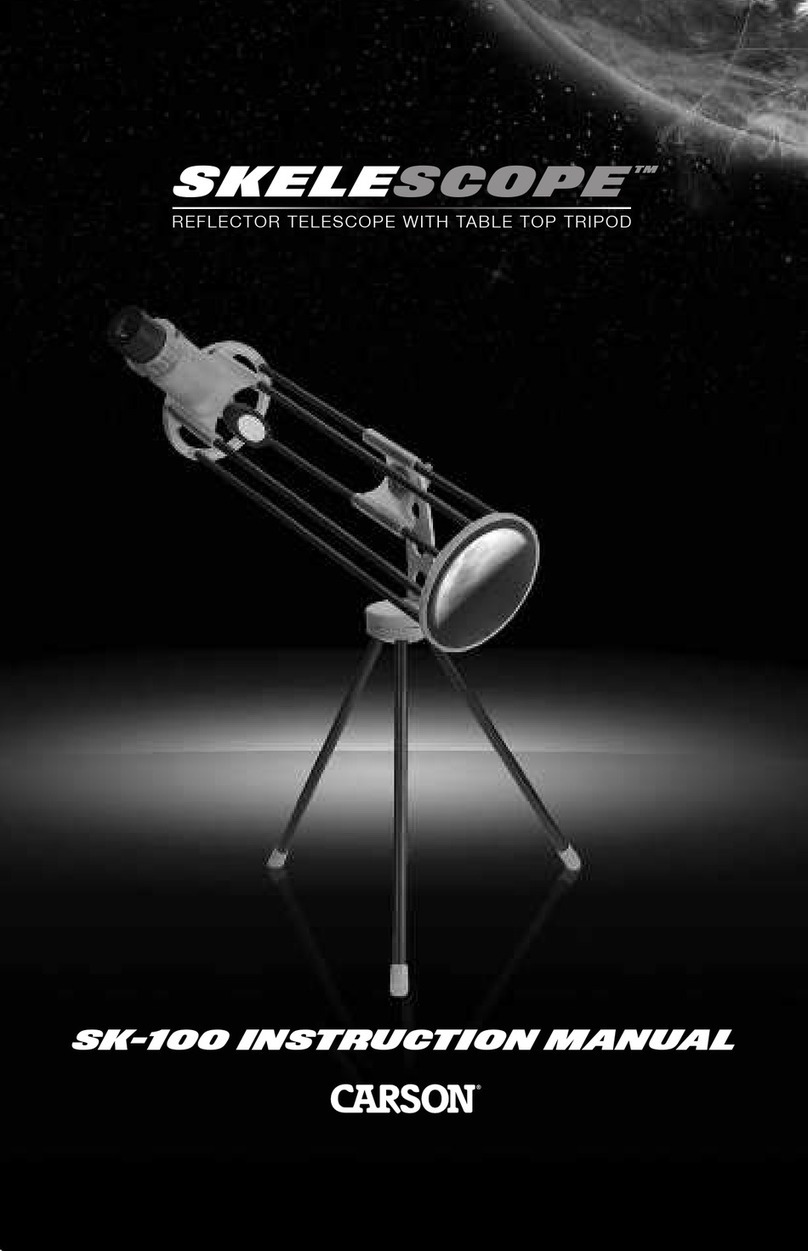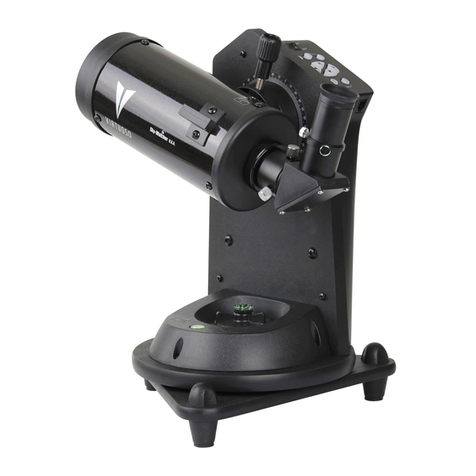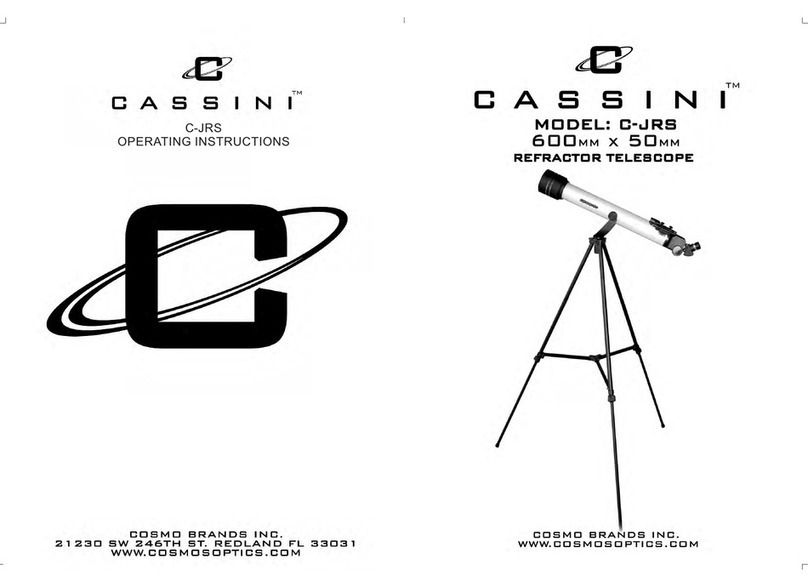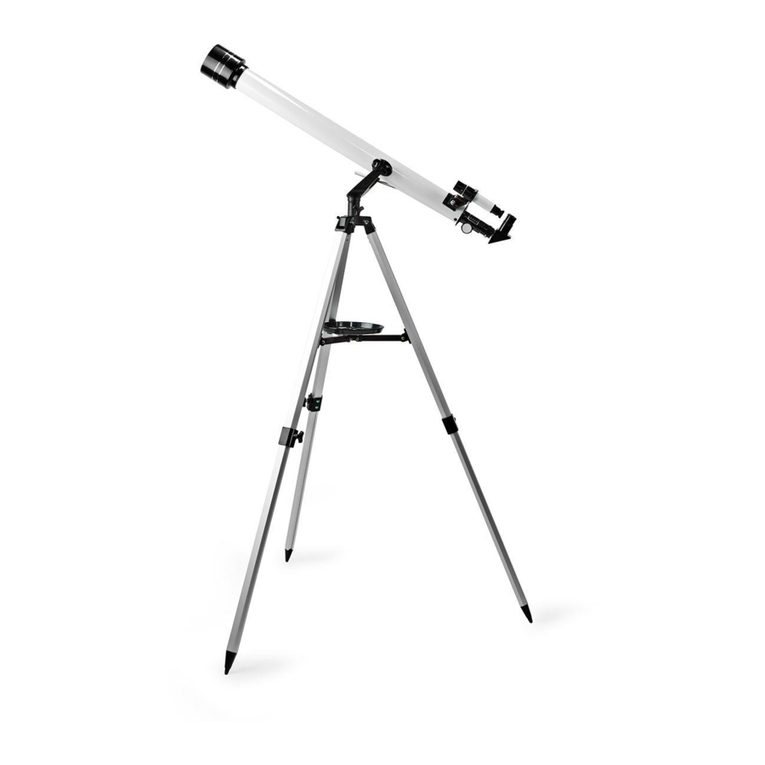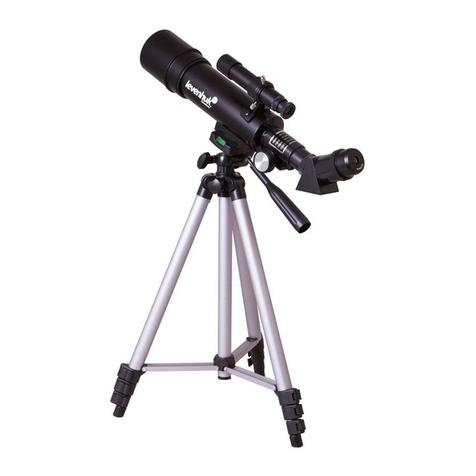
If you wear eyeglasses, you may be able to keep them on
while you observe, if your eyepieces have enough “eye
relief” to allow you to see the whole field of view. You can
find out by looking through the eyepiece first with your
glasses on and then with them off, and see if the glasses
restrict the view to only a portion of the full field. If they do,
you can easily observe with your glasses off by just refocus-
ing the telescope the needed amount.
Aligning the Finder Scope
The ShortTube 80-T comes with a 6x26 correct-image
achromatic finder scope. (The 6x means six-times magnifi-
cation, and the 26 indicates a 26mm aperture.) The finder
scope makes it easier to locate the subject you want to
observe in the telescope, because the finder scope has a
much wider field of view. Unlike most finder scopes, images
viewed in the correct-image finder scope will appear prop-
erly oriented (same as the naked eye), which makes finding
Before you use the finder scope, it must be precisely aligned
with the telescope, so they both point to exactly the same
spot. Alignment is easiest to do in daylight, rather than at
night under the stars. First, insert the lowest-power (25mm)
eyepiece into the telescope’s focuser. Then point the tele-
scope at a discrete object such as the top of a telephone
pole or a street sign that is at least a quarter-mile away.
Move the telescope so the target object appears in the very
center of the field of view when you look into the eyepiece.
Now look through the finder scope. Is the object centered
in the finder scope’s field of view, i.e., on the crosshairs?
If not, hopefully it will be visible somewhere in the field of
view, so only fine adjustment of the two black nylon align-
ment screws will be needed. Otherwise you’ll have to make
coarser adjustments to the alignment screws to redirect the
Use the two alignment screws to center the object on the
crosshairs of the finder scope. Then look again into the
telescope’s eyepiece and see if it is still centered there as
well. If it isn’t, repeat the entire process, making sure not
to move the telescope while adjusting the alignment of the
Finder scopes can come out of alignment during trans-
port of the telescope, so check the alignment before each
Focusing the Finder Scope
If, when looking through the finder scope, you notice that
the images appear somewhat out of focus, you will need to
refocus the finder scope for your eyes. First loosen the lock
ring located behind the objective lens cell on the body of the
finder scope (see Figure 2a). Back the lock ring off by a few
turns, for now. Refocus the finder scope on a distant object
by threading the objective lens cell in or out of the finder
scope body. Precise focusing will be achieved by focusing the
finder scope on a bright star. Once the image appears sharp,
retighten the lock ring behind the objective lens cell. The
finder scope’s focus should not need to be adjusted again.
Many people enjoy using their telescope to view objects
such as boats, birds and wildlife. The ShortTube 80-T is an
excellent instrument for observing during the daylight hours.
For terrestrial applications, we recommend mounting the
ShortTube 80-T on an altazimuth-style camera tripod or
telescope mount such as the Orion VersaGo, which allow
simple vertical (altitude) and horizontal (azimuth) motions.
The ShortTube 80-T excels for astronomical observation. Its
unobstructed 80mm aperture and short 400mm focal length
(f/5) provide bright, expansive views of star fields and celes-
tial objects residing within our solar system and beyond.
The ShortTube 80-T can show much more than what is vis-
ible on Earth during the day. Once the Sun sets, there are
literally thousands of objects in the night sky that can be
inspected more closely. For astronomical usage, we recom-
mend a 90° star diagonal instead of the 45° correct-image
diagonal that comes with the telescope. The correct-image
diagonal is designed for daytime use, and will cause some
degradation of image quality when used for astronomy. Also,
the viewing angle provided by a 90° star diagonal is more
comfortable for looking up. When using a star diagonal, the
image in the eyepiece will appear backwards (inverted left-
For casual stargazing, an altazimuth mount mount will do
the job just fine. But an equatorial mount is designed to
make it easier to manually “track” the motion of celestial
objects with just one slow-motion cable. Furthermore, with
an equatorial mount you can add an optional motor drive to
track the stars automatically—a great convenience.
When selecting a location for nighttime stargazing, make
it as far away from city lights as possible. Light-polluted
skies greatly reduce what can be seen with the telescope.
Also, give your eyes at least 20 minutes to dark-adapt to the
night sky. You’ll be surprised at how many more stars you
will see! Use a red flashlight to see what you’re doing at the
telescope, or to read star charts. Red light will not spoil your
dark-adapted night vision as readily as white light will.
To find celestial objects with your telescope, you first need
to become reasonably familiar with the night sky. Unless you
know how to recognize the constellation Orion, for instance,
you won’t have much luck locating the Orion Nebula. A
simple planisphere, or star wheel, can be a valuable tool for
learning the constellations and seeing which ones are vis-
ible in the sky on a given night.
A good star chart or atlas can come in handy for helping
locate interesting objects among the dizzying multitude
of stars overhead. Except for the Moon and the brighter
planets, it is pretty time-consuming and frustrating to hunt
for objects randomly, without knowing where to look. It is
best to have specific targets in mind before you begin look-
ing through the eyepiece.
